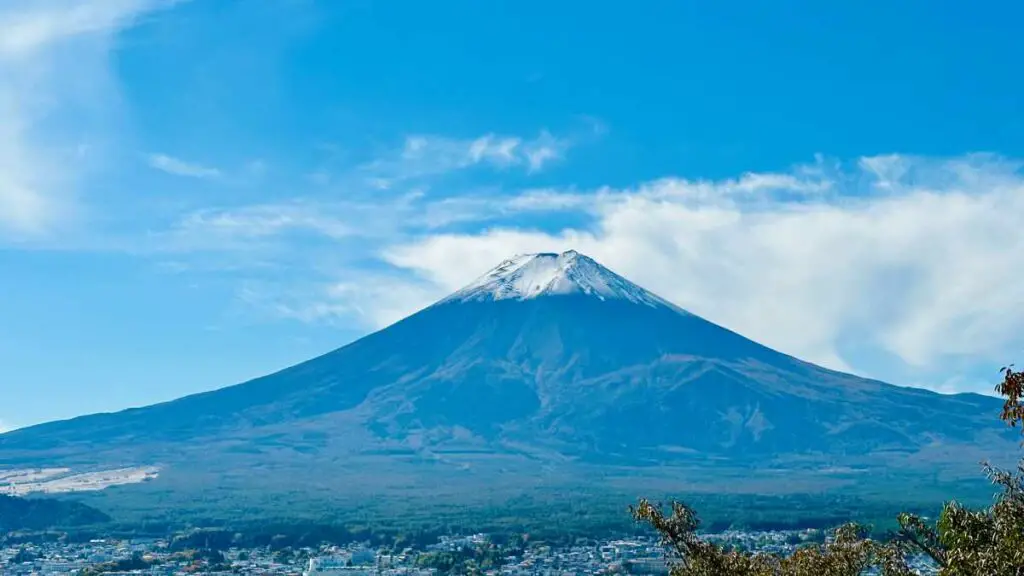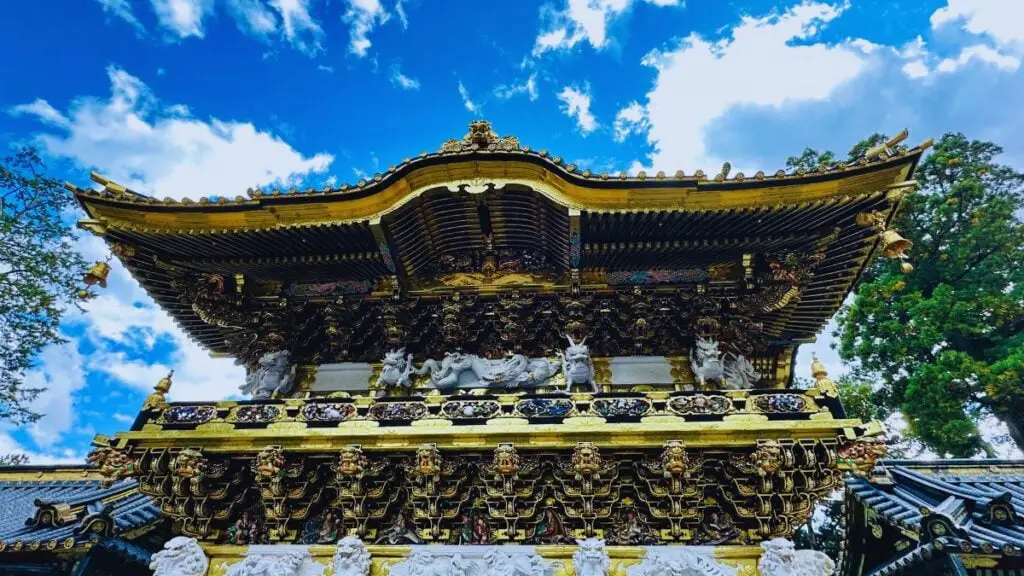I was compiling all the information and pictures I had of the Japanese gardens when I decided to make this list of 19 gardens you don’t want to miss. These gardens are extremely beautiful and very close to the cities you will probably visit in Japan.
From Suizenji Park in Kumamoto to Kokyo Gaien, Kyosumi Garden, and Kyu-Shiba-rikyu Garden in Tokyo, and passing by the Stone Garden in Kyoto or even the Ritsurin Garden in Kagawa, Japan is filled with some of the most beautiful gardens.
Now let’s take a closer look at these places that are worth the visit when you need to slow down and recharge your batteries.
Kokyo Gaien National Garden (皇居外苑)
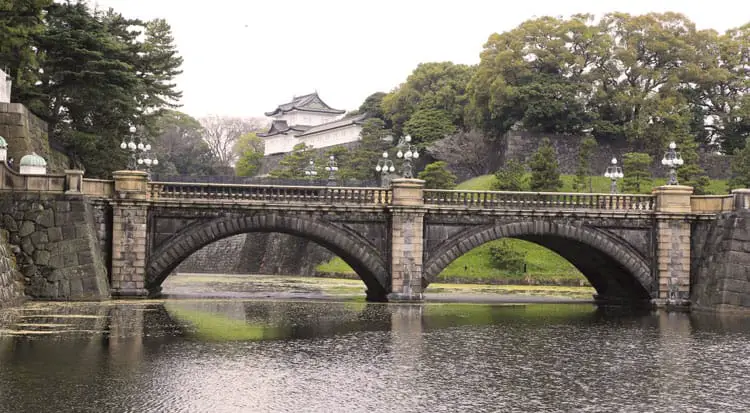
Address: 1-1 KokyoGaien, Chiyoda-ku, Tokyo 100-0002
Opening hours: always open
Entry fee: none
Information: The Kokyo Gaien National Garden was first opened to the public in 1949 after World War II and before that, the garden belonged to the Imperial Family. This place in the heart of Tokyo is perfect to visit and to forget for a while that you’re in a huge city. You should take a little time to relax and appreciate the view.
Hey, check out these recommendations I have for you!
Before going any further, take a look at some of the recommendations I've handpicked for you. I think these are essential items you should have on your trip to Japan. You can check them out and buy them directly from Amazon.
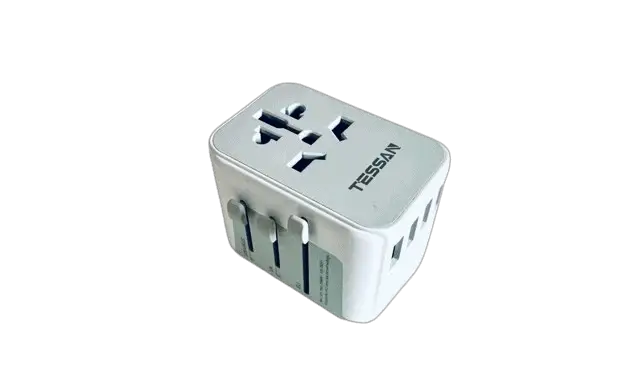
|

|

|
| A universal travel adapter | A 10,000 mAh power bank | A travel adapter and converter |
How to get there: You can get to the park in just 10 minutes from Tokyo Station. As you can see in the picture below, the park is very close to the station.

Suizenji Park (水前寺成趣園)
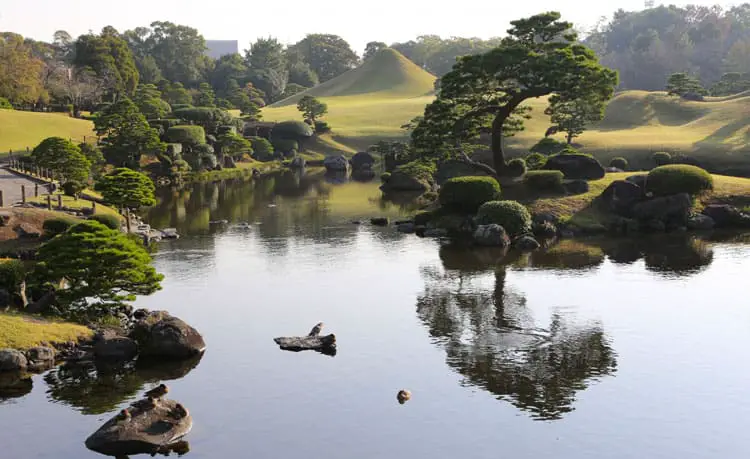
Address: 8-1 Suizenji Kōen, Chūō-ku, Kumamoto, 862-0956
Opening hours: 7:30 – 17:30 (from March to October), 8:30 – 16:30 (from November to February)
Entry fee: ¥4OO
Information: The Suizenji garden represents the 53 Stations of the Tokaido (a route from Edo to Kyoto during the Edo period). In Suizenji Park, you can see:
- The Izumi Shrine Tori gate
- The Izumi Shrine
- The Spring of Longevity
- The Noh Theatre
- The Hoshikawa bronze statue
- The pond at the center, surrounded by trees, bridges, and stones
How to get there: From JR Kumamoto Station take the tram to Suizenji Park Station. Walk for 5 minutes and you’ll reach the park.
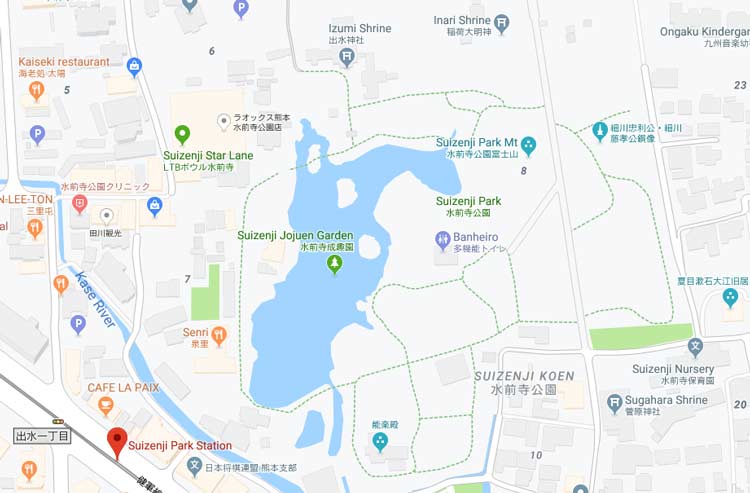
Kawachi Wisteria Garden (河内藤園)
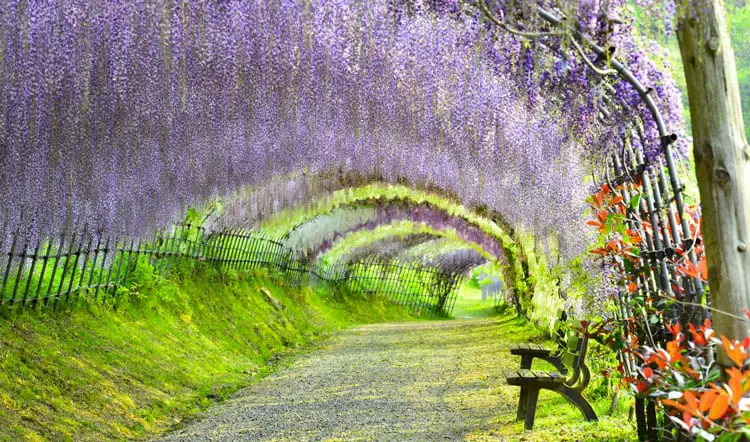
Address: 2-2-46 Kawachi, Yahatahigashi-ku, Kitakyushu, Fukuoka 805-0045
Opening hours: 8:00 – 18:00 (from mid-April to early May), 9:00 – 17:00 (from mid-November to early December)
Entry fee: ¥500 (during Wisteria season, prices can go up to ¥1500 and you’ll have to pay the difference at the entry of the park). During the peak season in spring, you must make a reservation in advance or you won’t be able to enter the park.
Information: The Wisteria Garden is a private garden that has more than 20 different kinds of wisterias. In this park, you can walk through 2 multicolored tunnels (80 and 110 meters long). You also have a big 100 square meters area of Noda Nagafuji. In November, there’s a special area at the bottom of the park to observe the Autumn leaves.
How to get there: The nearest bus stop is a 55-minute walk from the park, so it’s not that easy to get there. If you have a car, it will be easier since you have 200 free parking spots near the entrance. Another option to consider is the shuttle bus between Yahata Station and Wisteria Garden, but only during the peak season.
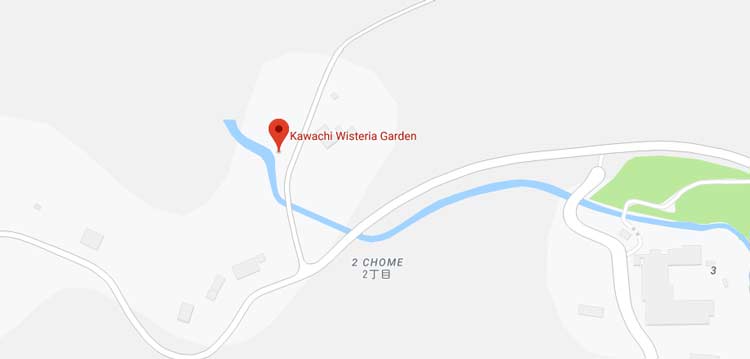
Nanraku-En Garden (南楽園)
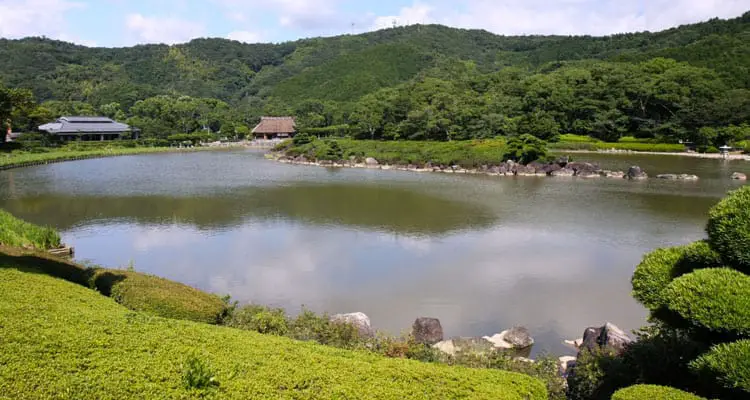
Address: 1813 Tsushimacho Chikaie, Uwajima, Ehime 798-3303
Opening hours: 9:00 – 17:00
Entry fee: ¥300
Information: The Nanraku-en Garden was selected as one of the top 100 urban parks in Japan. You can enjoy the park all year long since they have four-season events like the Nanraku Rakuen Welcome Festival, Nanrakuen Outer Hori Sakura Festival, Nanraku Rakuen Moon Festival, or Autumn Healing South Paradise. Also, don’t miss these three blessing spots:
- The Blessing of the Happy Bridge
- Stone of Hope (The Path of Manyo)
- Amber monument (Sea House)
How to get there: The easiest way to get to the garden is by car (a 30-minute ride from the Uwajima Station) or by bus (40 minutes).
Yoshimizu-en Garden (吉水園)
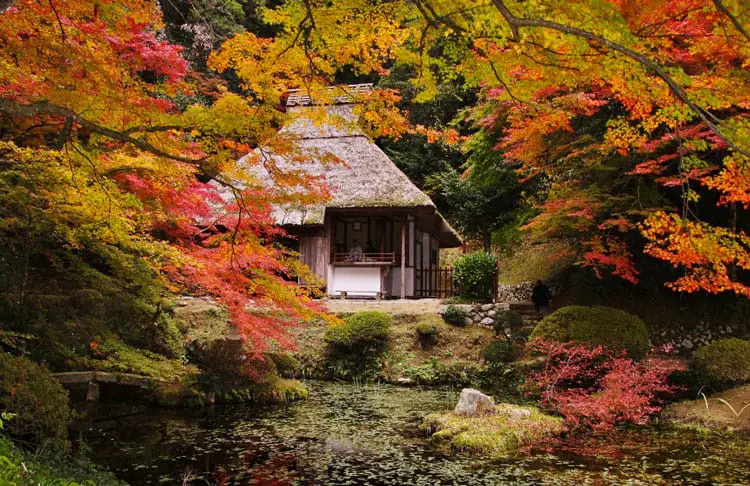
Address: 3410 Kake, Akiota-cho, Yamagata-gun, Hiroshima 731-3501
Opening hours: 9:00 – 17:00 (twice a year: first and second weekend of June and second weekend of November)
Entry fee: ¥200
Information: The Yoshimizu Garden is known for the Forest Tree Frogs, and it has been considered a wildlife reserve since 1952. It’s also known for the amazing beauty of its Autumn leaves.
How to get there: From the JR Kabe Station, you can pick a car and drive for 35 minutes to get to the park. This will be the easiest way. Otherwise, you can pick up the bus from the station, but it will take longer.
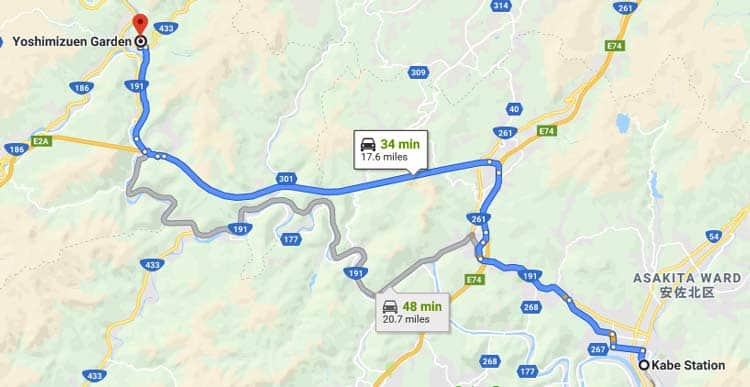
Kenroku-en Garden (兼六園)
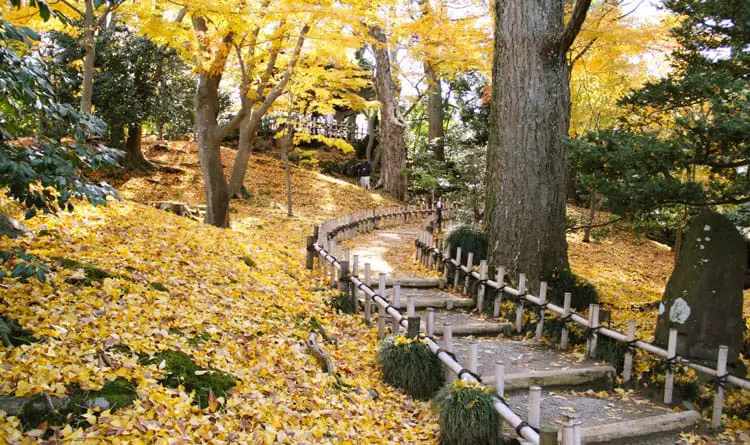
Address: 1 Kenrokumachi, Kanazawa, Ishikawa 920-0936
Opening hours: 7:00 – 198:00 (from March 1 to October 15), 8:00 – 17:00 (from October 16 to February 28/29)
Entry fee: ¥310
Information: When visiting the Kenroku-en Garden, you can also enjoy the amazing Kanazawa Castle which is a National Historical Site. The Kenroku-en Garden is one of the 3 most beautiful gardens in Japan and it changes with each season. Like this, you can have different landscapes throughout the year. Take a look at the official website for further information.
How to get there: From the Okanazawa Station, you can pick a taxi and it’s just a 10-minute ride to the park. The bus is also available at this station (it takes slightly longer due to the stops)
Japan’s waiting for you! Get your quick guide for the best trip.
Grab It Now
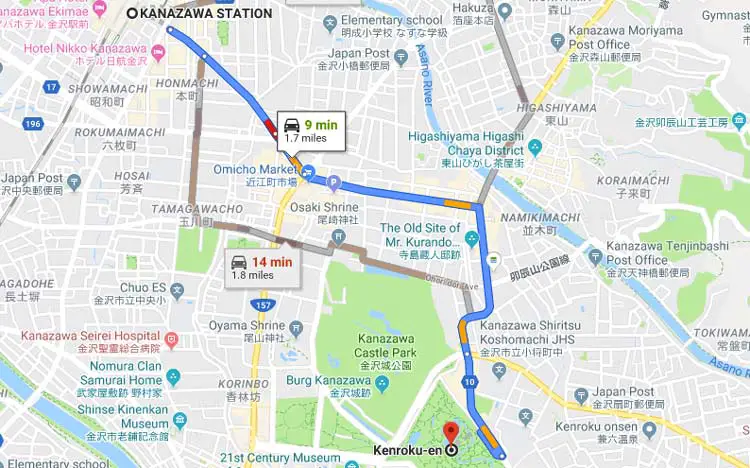
Korakuen Garden (岡山後楽園)
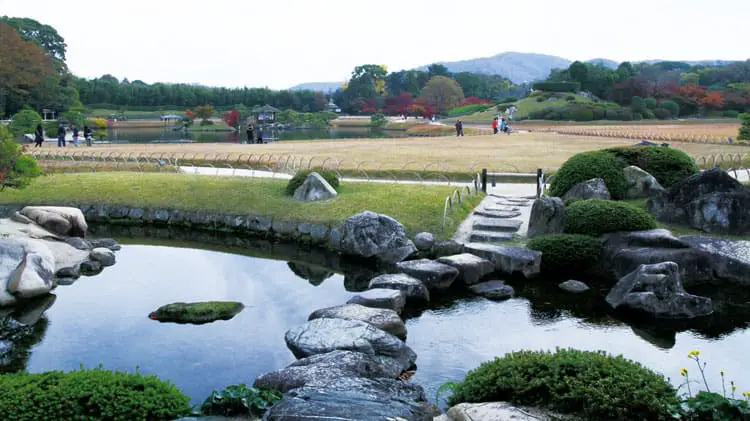
Address: 1-5 Kōrakuen, Kita-ku, Okayama, 703-8257
Opening hours: 7:30 – 18:00 (from March 20 to September 30), 8:00 – 17:00 (from October 1 to March 19)
Entry fee: ¥400
Information: Just like Kenroku-en Garden in Kanazawa, Korakuen Garden is one of the 3 most famous gardens in Japan. In this garden you will be able to enjoy different things like:
- Enyo-tei House
- Kayo-no-ike Pond
- Jizo-do Shrine
- Ofuna-iri-ato Dock Remains
- Renchi-ken Teahouse
- Yuishinzan Hill
- Kako-no-ike Pond
- Chisio-no-mori Grove
- and much more
You can download the garden’s brochure from the official website here.
How to get there: Getting to Korakuen Garden it’s just a 10-minute ride from JR Okayama Station, or a 25-minute walk if you prefer. The bus is also available (10–15 minutes).

Ritsurin Garden (栗林公園)
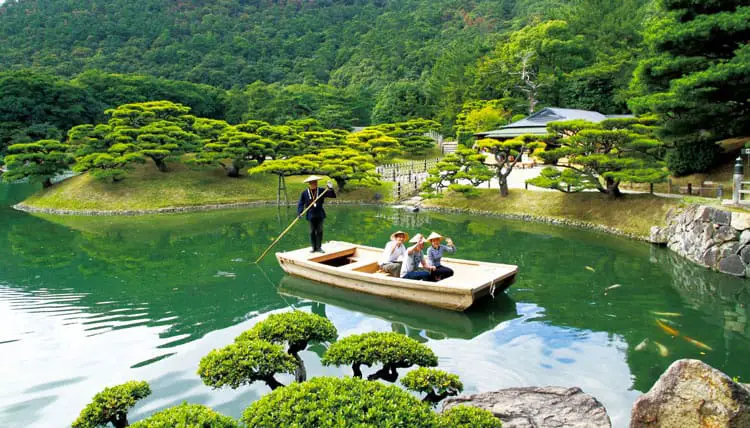
Address: 1-chōme-20-16 Ritsurinchō, Takamatsu, Kagawa 760-0073
Opening hours: 7:00 – 17:00 (December and January), 7:00 – 17:30 (February), 6:30 – 18:00 (March), 5:30 – 18:30 (April, May, September), 5:30 – 19:00 (June, July, August), 6:00 – 17:30 (October), 6:30 – 17:00 (November)
Entry fee: ¥410
Information: With its 6 ponds and 13 landscaped hills, Ritsurin Garden is a place that’s worth the visit. There are so many beautiful things to see in this garden that I don’t even know where to start. Anyway, just make sure you don’t miss all the flower and tree fields, the maple tree shore, the Neagari Goyo-matsu Pine, and some buildings like Kikugetsu-tei Teahouse or Sanuki Folk Craft Museum. Also, take a ride in the Japanese-style boat, available from October to February. You can get the park brochure from the official website here.
How to get there: From the Ritsurin-Koen-Kitaguchi station, you just have to walk for less than 5 minutes and you’re at the park, otherwise, it’s a 10-minute walk from the Ritsurin-Koen station.
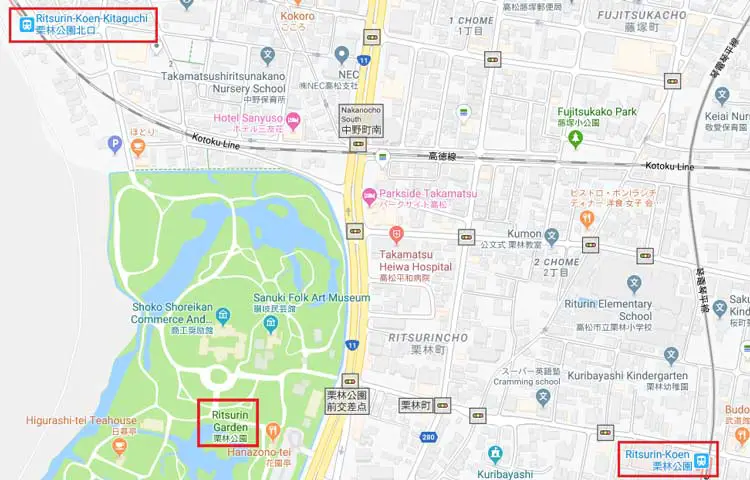
Hama Rikyu Garden (浜離宮恩賜庭園)
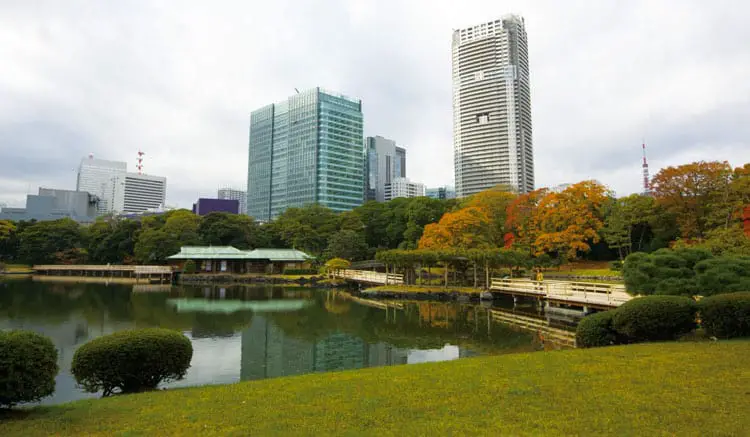
Address: 1-1 Hamarikyūteien, Chuo City, Tōkyō-to 104-0046
Opening hours: from 9:00 to 16:30
Entry fee: ¥300 (free entry on Green Day (May 4) and Tokyo Citizen’s Days (October 1))
Information: The Hama Rikyu garden, which belonged to different Shogun over time, was given to the city of Tokyo in 1945 by the Imperial family. When visiting, make sure you don’t miss the 300-year-old pine not too far from the park’s entrance. You can download the park’s brochure from the Tokyo Metropolitan Park Association using this link.
How to get there: Close to the Shiodome station, you just have to walk for about 10 minutes to get to the entry of the park.
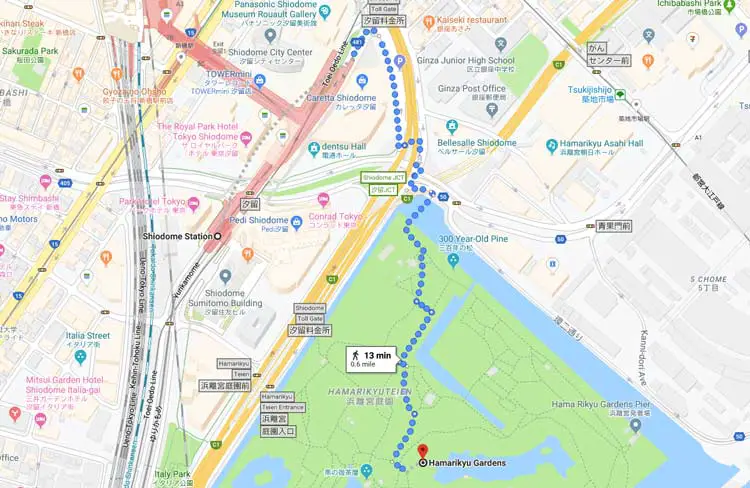
Shinjuku Gyoen National Garden (新宿御苑)
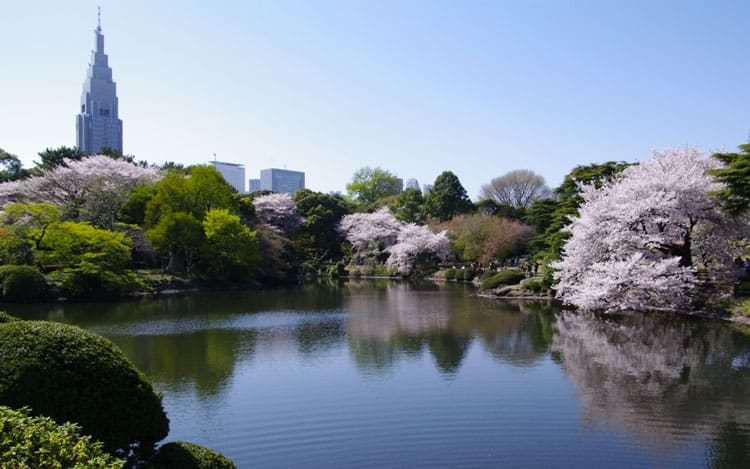
Address: 11 Naitōmachi, Shinjuku City, Tōkyō-to 160-0014
Opening hours: 9:00 – 17:30 (from mid-March to late September), 9:00 – 16:00 (from October to mid-March), 9:00 – 18:30 (July and August)
Entry fee: ¥500
Information: Like many Japanese gardens, Shinjuku Gyoen was also an Imperial garden that was opened to the public after the war. This garden is particularly fascinating because it combines 3 types of gardens: landscaped gardens, shaped gardens, and Japanese gardens. Other than the stunning view, you can also enjoy some cool facilities like the restaurant Yurinoki, the café Hananouki, or the tearoom. You can download the official brochure here (source: Shinjuku Gyoen website)
How to get there: The park is very close to the Shinjuku Station, just a 10-minute walk to the entry of the park.
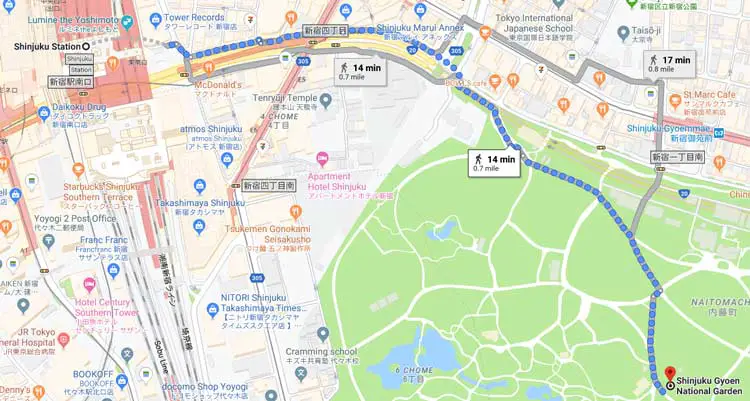
Kiyosumi Garden (清澄庭園)
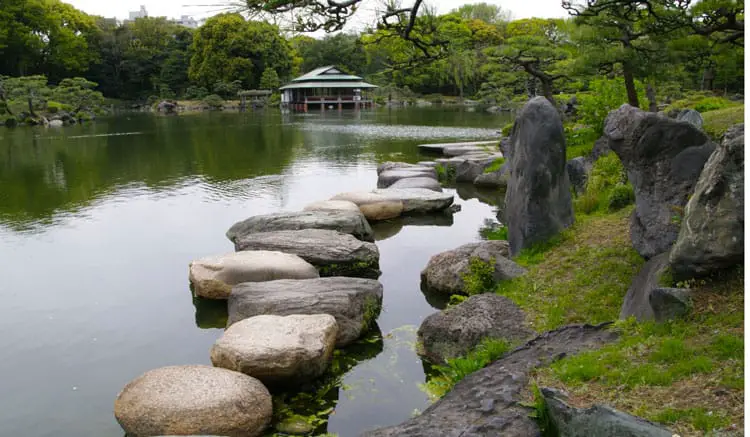
Address: 3-3-9 Kiyosumi, Koto City, Tōkyō-to 135-0024
Opening hours: 9:00 – 16:30
Entry fee: ¥150 (free entry on Green Day (May 4) and Tokyo Citizen’s Days (October 1))
Information: In Kiyosumi Garden, you will be able to see a lot of Japanese Black pines and flowers like purple azaleas, hydrangeas, iris, and Taiwan cherry. Also, make sure you don’t miss some amazing viewpoints like:
- Iso-Watari (stepping stones near the pond that allow the passage of visitors)
- Fuji-san (the largest and tallest hill in the garden)
- Ryotei (a building with the style of a tea ceremony house)
You can download the park’s brochure from the Tokyo Metropolitan Park Association using this link.
How to get there: Very close to the Kiyosumi-shirakawa Station, you just have to walk for 5 minutes to get there.
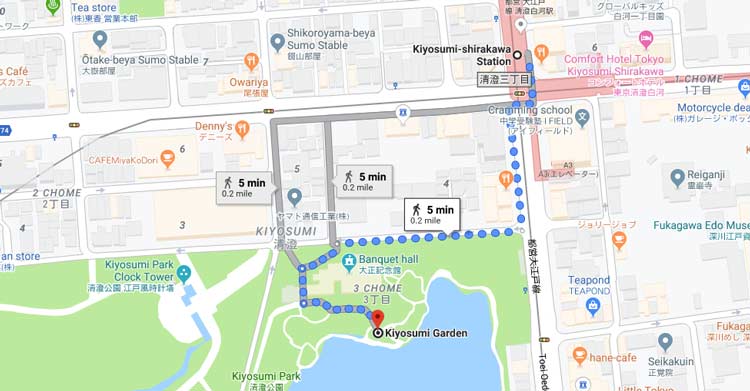
Kyu-Shiba-rikyu Garden (旧芝離宮恩賜庭園)

Address: 1 Chome-4 Kaigan, Minato City, Tokyo 105-0022
Opening hours: 9:00 – 16:30
Entry fee: ¥150 (free entry on Green Day (May 4) and Tokyo Citizen’s Days (October 1))
Information: The Kyu-Shiba-rikyu garden is one of the oldest feudal gardens that resisted to the present day. The garden goes all around the pond at the center and has some amazing rock and land formations. You can download the park’s brochure from the Tokyo Metropolitan Park Association using this link.
How to get there: Kyu-Shiba-rikyu Garden is close to the Hamamatsucho Station. Once you leave the station, just walk for 1 minute and you’re at the park.
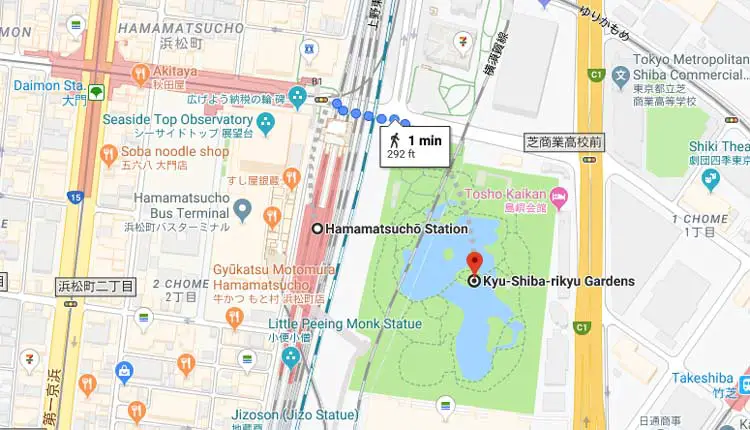
Hamamatsu Castle Park (浜松城公園)
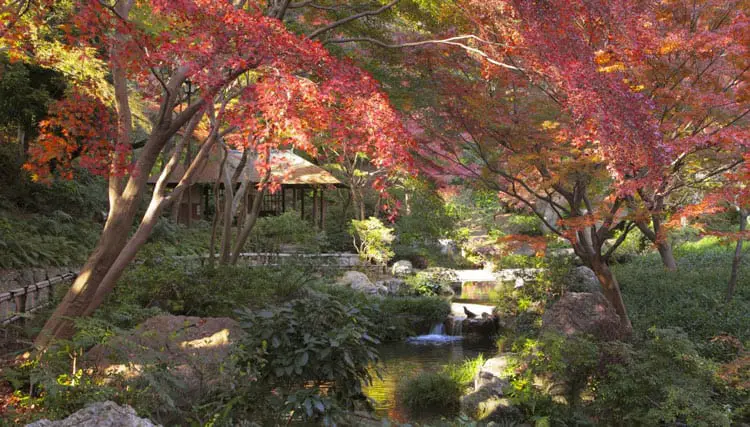
Address: 100-2 Motoshiro-cho, Naka-ku, Hamamatsu City, Shizuoka 430-0946
Opening hours: always open (8:30 – 16:30 castle opening hours)
Entry fee: none (¥200 to visit the castle)
Information: This is one of the most beautiful gardens you’ll get to see, and the castle is just amazing. If you visit during cherry blossom bloom season (late March to early April), this park will be one of the best spots. For more information, you can take a look at the official website.
How to get there: From Hamamatsu Station, take the bus and stop at Shiyakusho Minami. From there, just walk for 6 minutes and you’re at the park.
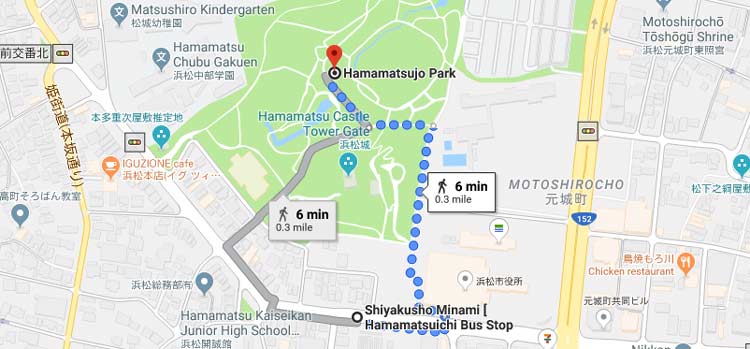
Koishikawa Korakuen Gardens (小石川後楽園)
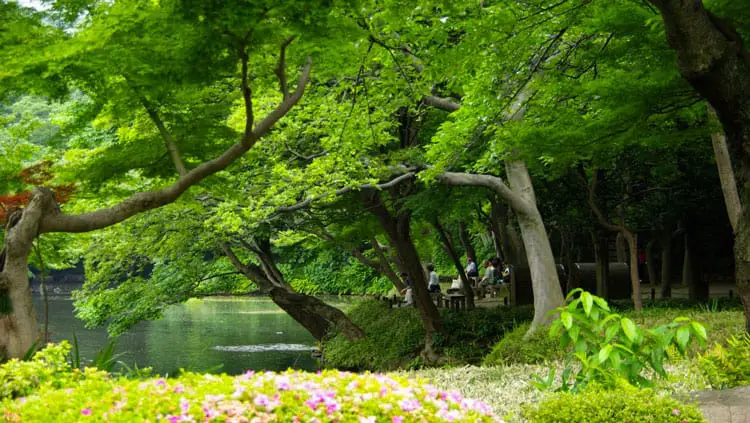
Address: 1-6-6 Koraku, Bunkyo City, Tokyo 112-0004
Opening hours: 9:00 – 16:30
Entry fee: ¥300 (free entry on Green Day (May 4) and Tokyo Citizen’s Days (October 1))
Information: This garden, considered a historic site and a place of scenic beauty, has a lot of Chinese influences. You definitely want to see these spots:
- Tsuten-kyo (a vermilion-colored bridge)
- Engetsu-kyo (the Full Moon Bridge)
- Seiko-no-tsutsumi (a bank just like the one in Lake Seiko in China)
- Nobedan (a Chinese-style stone path)
- Shidare-zakura (a 60-year-old cherry tree)
You can download the park’s brochure from the Tokyo Metropolitan Park Association using this link.
Dreaming of Japan? Here’s your go-to guide for a great trip.
Download Free Guide
How to get there: Just like most gardens in Tokyo, there’s always a station close to the garden. To get to the Koishikawa Korakuen garden, just stop at Iidabashi Station and walk for less than 5 minutes.
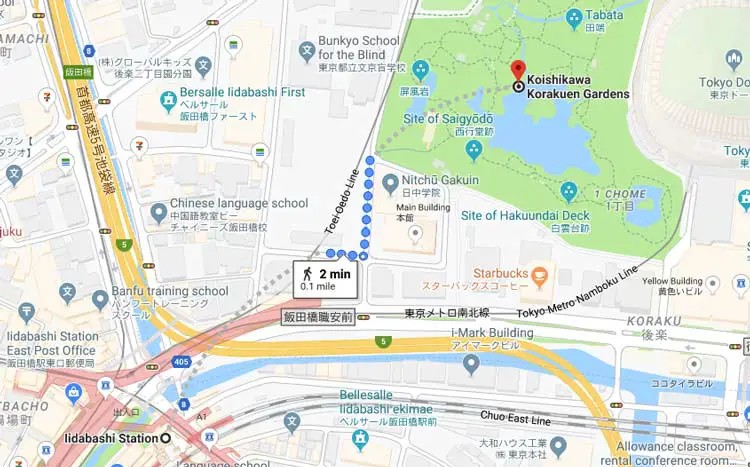
Shukkeien Garden (縮景園)
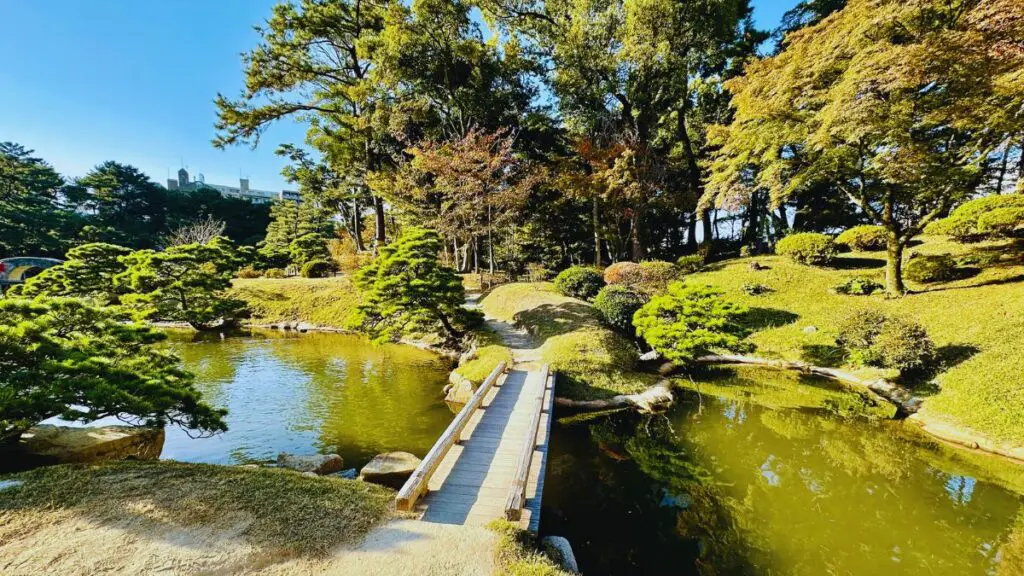
© Ana Costa
Address: 2-11 Kaminoborichō, Naka-ku, Hiroshima, 730-0014
Opening hours: 9:00 – 18:00 (from April to September), 9:00 – 17:00 (from October to March)
Entry fee: ¥260
Information: The Shukkeien Garden is one of those gardens that you can enjoy in any season, as it is always beautiful, from spring to winter. While walking around and enjoying the view, make sure you don’t miss the best photo spots:
- Oka-ko (Halo of Cherry Blossoms)
- Yuyu-tei (Arbor of Leisure)
- Geiki-ho (Peak of distant views)
- Chujo-to (Arbor of Rested Cane)
- Chozen-kyo (Place of Solitude)
- Sekisho-an (Autumn Sunset Teahouse)
You can download the official brochure here.
How to get there: From the Hiroshima Station, just walk for 15 minutes and you’ll arrive at the park. If you don’t feel like walking, you can also take the bus from the station.

Adachi Museum of Art (足立美術館)
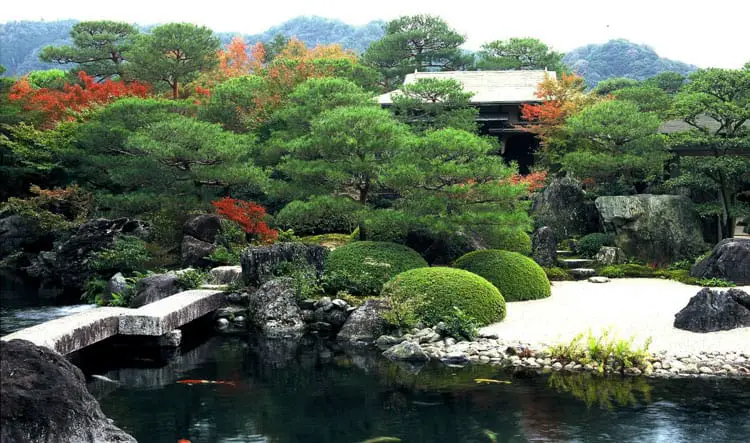
Address: 320 Furukawachō, Yasugi, Shimane 692-0064
Opening hours: 9:00 – 17:30 (from April to September), 9:00 – 17:00 (from October to March)
Entry fee: ¥2300
Information: The Adachi Garden is composed of six different gardens and is considered a “living Japanese painting”. These gardens are extremely beautiful in any season. You can download the museum brochure to help you before and during your visit.
How to get there: The easiest way is to use the free shuttle bus from JR Yasugi Station. It’s just a 20-minute ride. You can view the timetable on the Adachi Museum Website.
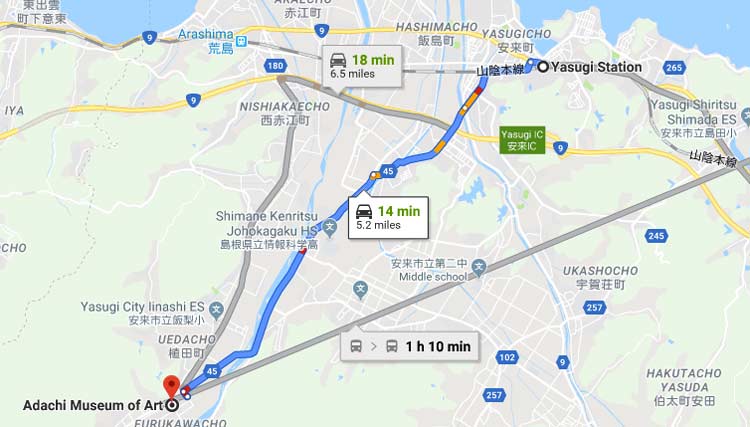
Ryoan-ji Stone Garden (龍安寺)

Address: 13 Ryōanji Goryōnoshitachō, Ukyo Ward, Kyoto, 616-8001
Opening hours: 8:00 – 17:00 (from March to November), 8:30 – 16:30 (from December to February)
Entry fee: ¥500
Information: The Stone Garden is a part of the Ryoan-ji Buddhist Temple. Other than the impressive calm of the garden, you will be able to appreciate other things like the Kyoyochi Pond, the Pilgrim’s Path, the Wabisuke Camellia Tree, or the Stone Water-Basin.
How to get there: From the JR Kyoto Station, take the bus and stop at Ritsumeikan daigakuzen. Then walk for 7 minutes and you’ll arrive at the temple.
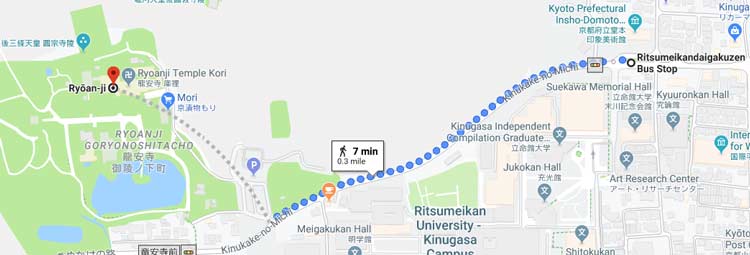
Sorakuen Garden (相楽園)
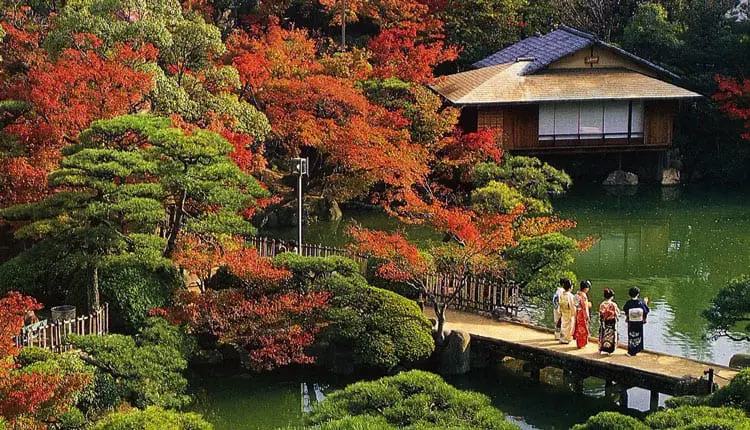
Address: 5-3-1 Nakayamate-dori, Chuo-ku,Kobe City, Hyogo 650-0004
Opening hours: 9:00 – 17:00
Entry fee: ¥300
Information: The Sorakuen Garden is an astonishing place of calm and relaxation. And it is incredibly beautiful during Spring and Autumn. Other than the garden, you will be able to see and enjoy the Houseboat (Kawagozabune), the Kodera Stable, and the Hassam House. All three are considered as an important cultural property.
How to get there: From JR Motomachi Station, just walk for 15 minutes and you’ll be at the park.
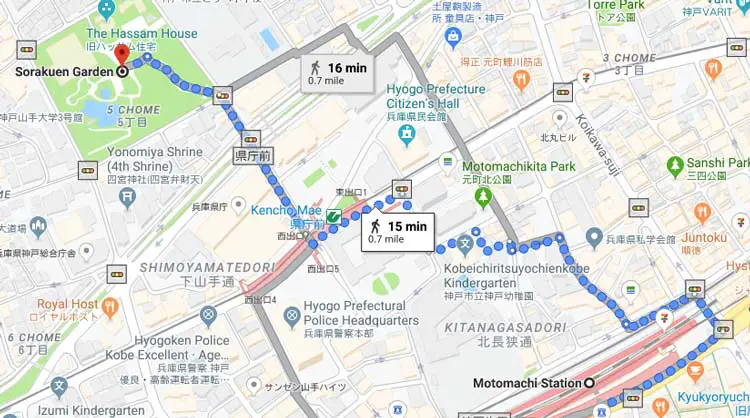
Genkyuen Garden (玄宮園)
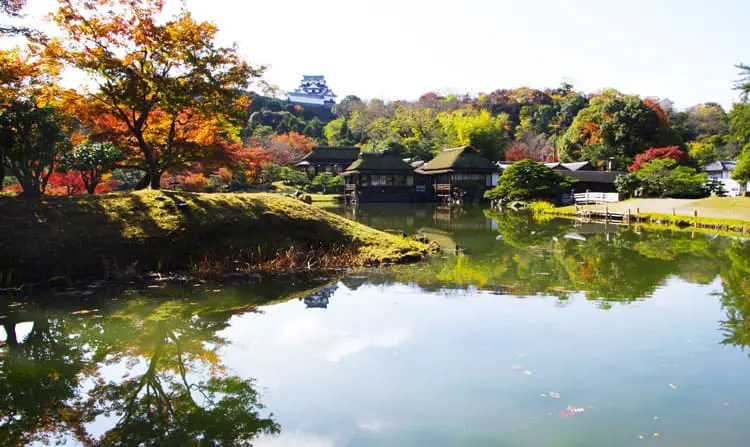
Address: 3 Konkichō, Hikone, Shiga 522-0061
Opening hours: 8:30 – 17:00
Entry fee: ¥200 (¥800 for the garden + castle)
Information: The Genkyuen Garden is located on the grounds of Hikone Castle, which is another extraordinary place to visit. This garden has a central pond with four small islands, and you can see the Hikone Castle in the background.
You can download this brochure to help you during your visit.
How to get there: From Hikone Station, you just have to walk for about 16 minutes, and you’ll be in the garden.
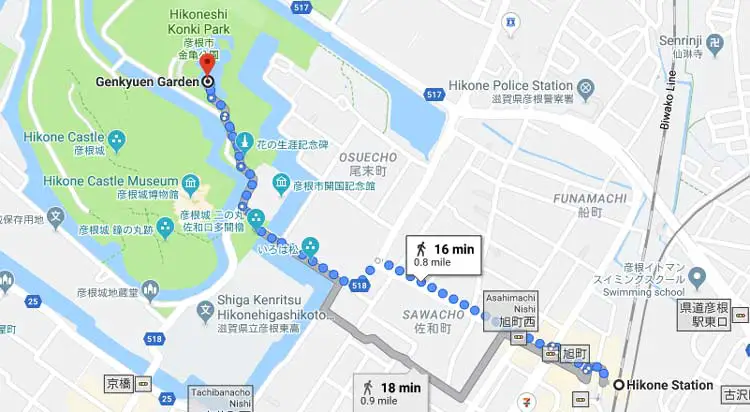
And that’s the end of this list.
I hope you’ll appreciate this list of gardens and that your visits will be just as amazing as these incredible Japanese landscapes. Feel free to share the results of your visit in the comments below.
Disclaimer: Although I do my best to keep the post updated, information like fees and opening hours is changing all the time. Make sure you check each official website of the garden you want to visit to see if there’s any recent change.

